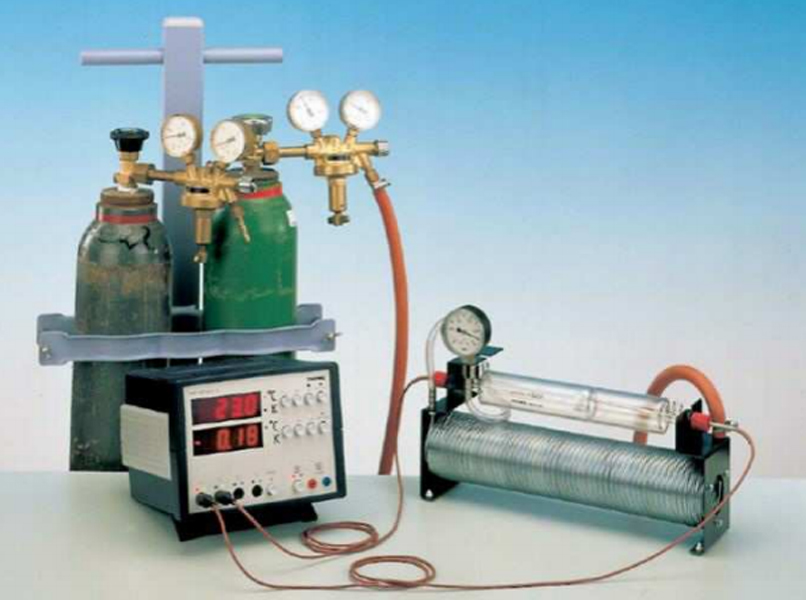Joule-Thomson effect

Principle
A stream of gas is fed to a throttling point, where the gas (CO2 or N2) undergoes adiabatic expansion. The differences in temperature established between the two sides of the throttle point are measured at various pressures and the Joule-Thomson coefficients of the gases in question are calculated.
Benefits
- For both demonstration and student experiments
- With detailed experiment guide
- Affordable set-up
Temperature probe, immersion type, Pt100
PHYWE Temperature meter digital, 4-2
Reducing valve for CO2 / He
Reducing valve f.nitrogen
Wrench for steel cylinders
Hose clip f.12-20 diameter tube
Steel cylinder,CO2, 10l, full
Steel cylinder,nitrogen,10l, full
Gas-cylinder Trolley for 2 Cyl.
Joule-Thomson apparatus
Tasks
- Determination of the Joule-Thomson coefficient of CO2.
- Determination of the Joule-Thomson coefficient of N2.
What you can learn about
- Real gas
- Intrinsic energy
- Gay-Lussac theory
- Throttling
- Van der Waals equation
- Van der Waals force
- Inverse Joule-Thomson effect
- Inversion temperature
